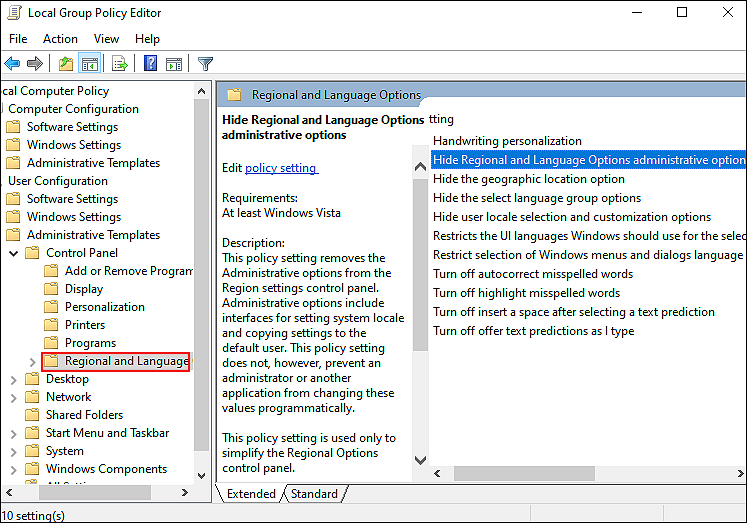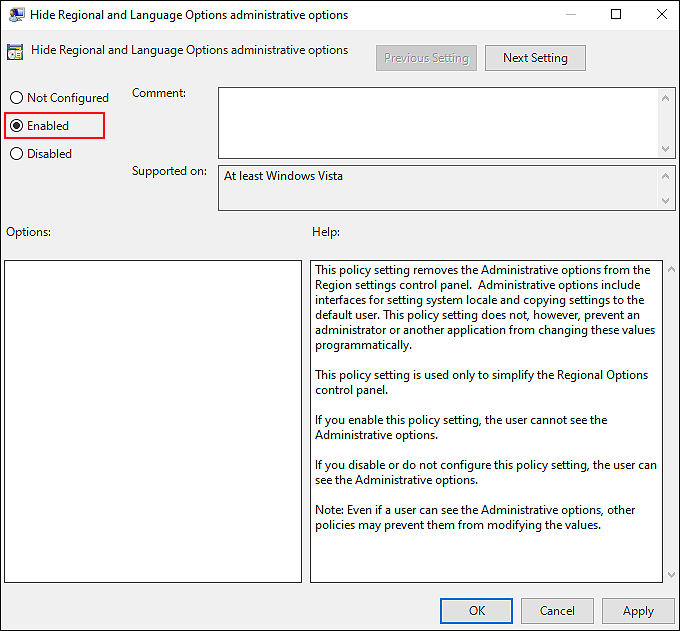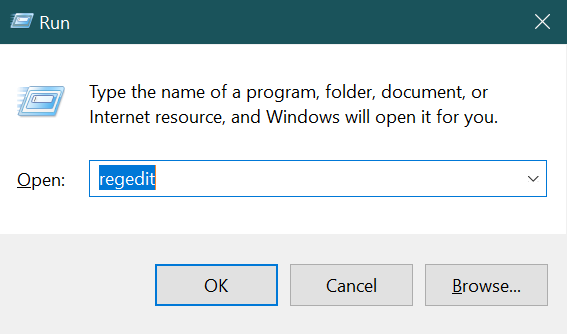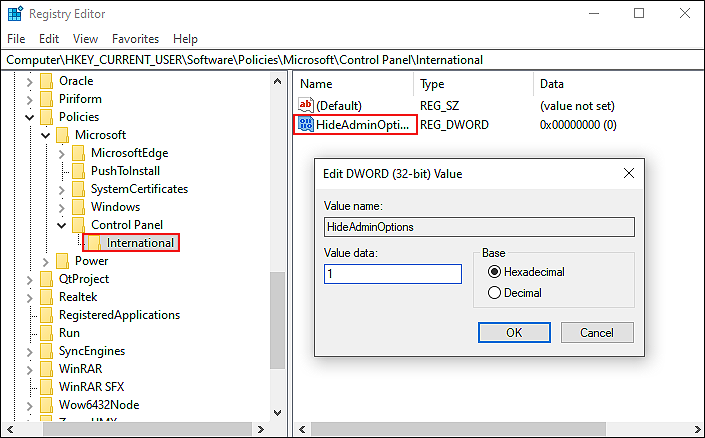Wondering how to hide administrative tab in regional and language settings?
The Administrative tab in the Regional and Language option is responsible for managing the language used to display text on programs that do not support Unicode.
Depending on how many users your computer has, you may want to limit their access to the Administrative tab in Regional and Language settings since this is an administrative-level feature.
If due to this or any other reason, you are looking for ways to hide Administrative Tab in Regional and Langauge settings, you are in the right place.
Our guide will walk you through some simple methods for doing so in detail below.
Let’s get started.
1. Use the Group Policy Editor.
If you have always wanted to have better control over the working environment of your operating system, then the Group Policy Editor (GPE) is a feature you should know about.
In GPE, the information about Windows programs and processes is stored in the form of policies. Administrators modify these keys to customize the features, and that is exactly what we are going to do in this method.
If however, if you use Windows 10 Home Edition, this method will not work for you. In this case, jump to Method 3 instead.
Here is how you can use the Group Policy Editor to hide Adminitrative tab in Regional and Language settings in Windows 10:
- Open a Run dialogue box by pressing Windows + R keys simultaneously.
- Inside the text field of the dialogue box, type ‘gpedit.msc‘ and hit Enter. Doing so will launch the Group Policy Editor in Windows.

- In the newly launched window, navigate to the location mentioned below.
User Configuration\ Administrative Templates\ Control Panel\ Regional and Language Options
- Locate Hide Regional and Language Options administrative options in the right pane and double-click on it.

- Click on Enabled and then hit Apply/OK to save the changes.

- Now check if following the methods mentioned above help you hide the Administrative tab in Regional and Language settings. Assuming it didn’t, you’ll have to force Group Policy Editor update. See the steps below for how to do that.
- Type cmd in the search bar and click on Run as administrator. This will launch elevated Command Prompt on your screen.
- Inside the Command Prompt window, type the command mentioned below and hit Enter to execute it.
gpupdate /force
- Once the command is executed, check if the Administrative tab in Regional and Language settings is hidden.
Hopefully, doing so will hide the Administrative tab on your PC without any issues.
2. Try Using CleanMyPC.
If you are not able to perform the intended function by using one of the methods we have explained in this guide, there is a high likelihood that a virus or corruption error on your computer is blocking you from doing so.
This can occur on systems with a lot of unwanted junk files piled up. Decluttering your Windows registry or other system files in this case might be a good idea if you haven’t done it in quite some time. You can do this by using an efficient PC cleaner, and if you do not have one already installed on your PC, then we encourage you to give CleanMyPC a try.

CleanMyPC comes with a host of system maintenance tools, including a cleanup tool, uninstaller, and performance booster. After installing the PC cleaning program, you need to run a scan.
Not only will it identify the issues, but will also attempt to resolve them automatically. If this is something your PC desperately needs, get CleanMyPC now and give your system a much-needed performance boost.
3. Use Windows Registry.
Another easy way of performing the operation under consideration is via Windows Registry.
The Windows Registry is a system utility that stores low-level information on the apps and programs installed on your computer. As the operating system performs tasks, it frequently uses this information.
The Windows Registry is also a great place to tweak your computer’s settings if you wish to control its working environment.
Here is how you can use Windows Registry to hide the Administrative tab:
- Open a Run dialogue box by pressing Windows + R keys simultaneously.
- Type ‘regedit‘ in the text field of the dialogue box and hit Enter. Doing so will launch Windows Registry on your PC.

- Inside the Registry Editor, navigate to the location mentioned below.
HKEY_CURRENT_USER\SOFTWARE\Policies\Microsoft\Control Panel\International
- In case the International key is missing, right-click on the Control Panel key and select the New > Key option.
- Rename this newly created key as International.
- Double-click on the International key and right-click anywhere in the right pane.
- Select the New > DWORD (32-bit) Value option.
- Rename this newly created value as HideAdminOptions.
- Now double-click on HideAdminOptions and under Value data, type 1.

That’s it.
This should hide Administrative tab in Regional and Language settings in Windows. If you want to enable this feature back in the future, simply follow the steps mentioned above again and in the 9th step, type 0 under Value data.
This wraps up our guide on hiding Administrative tab in Regional and Language settings in Windows. We hope that one of the methods mentioned above did the trick for you. In case you have any queries about the methods, feel free to let us know in the comment section below.
If this guide helped you, please share it. 🙂





